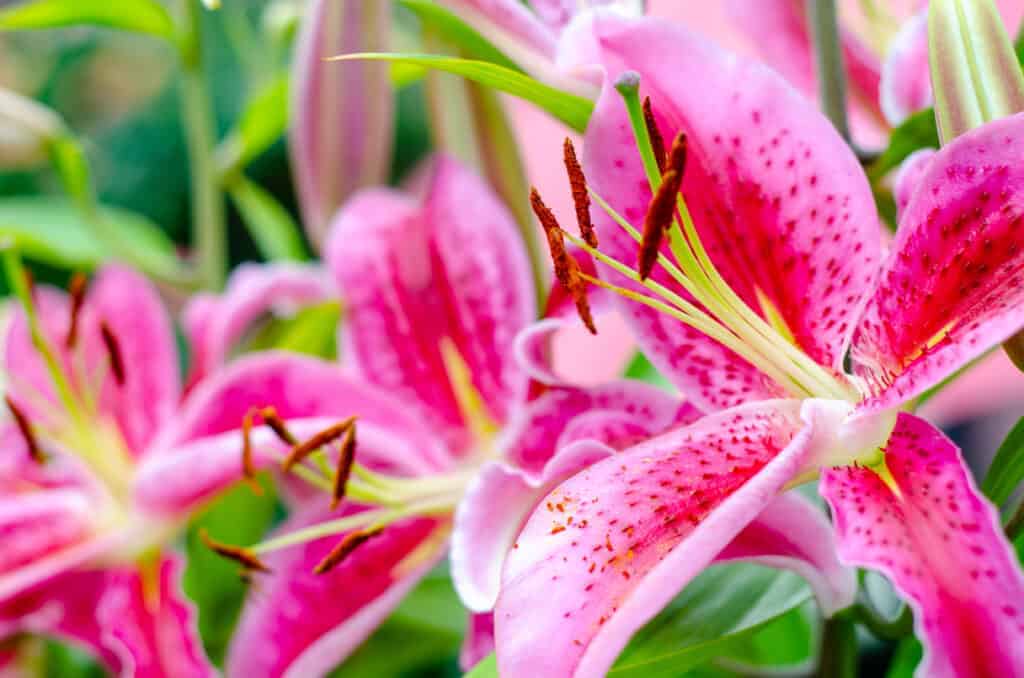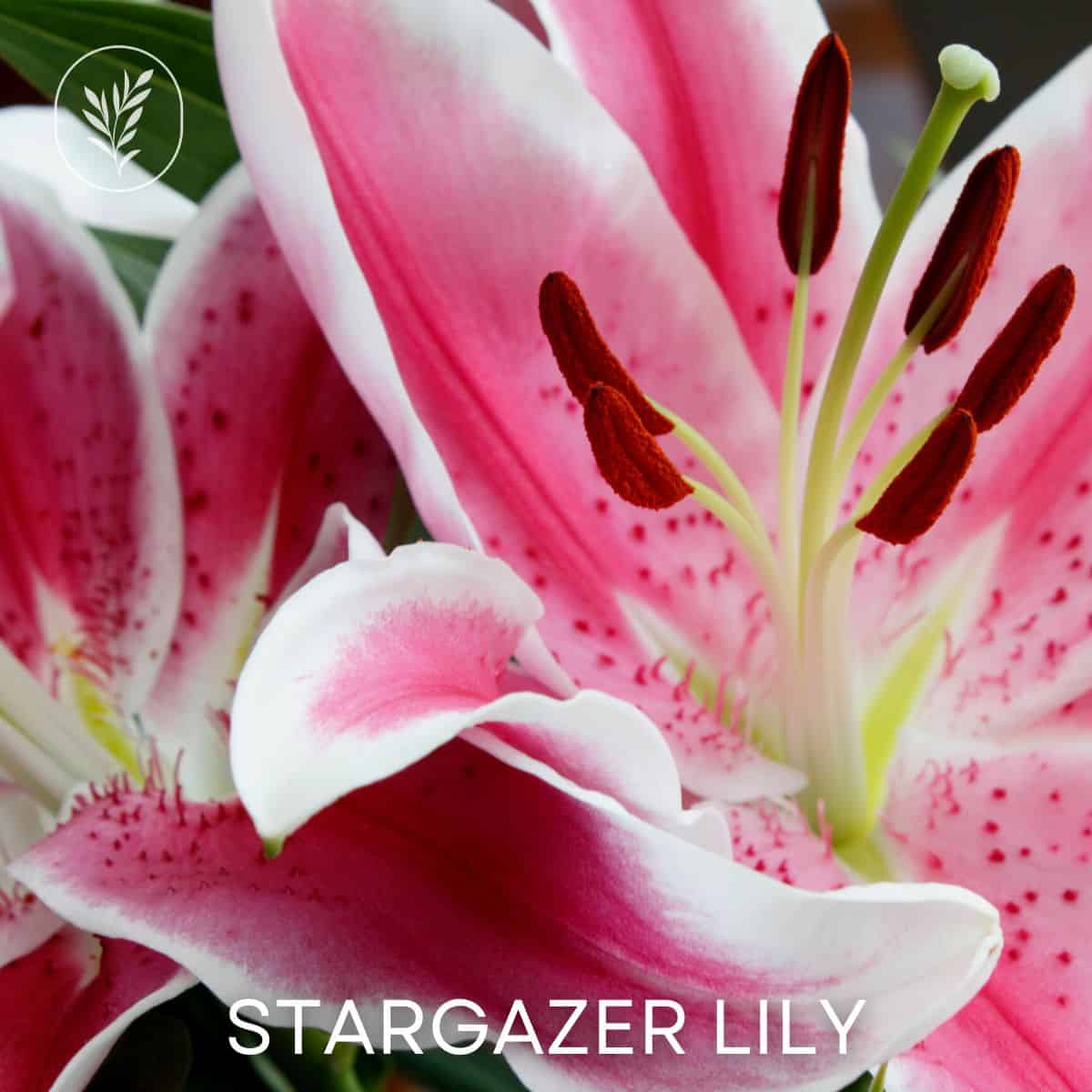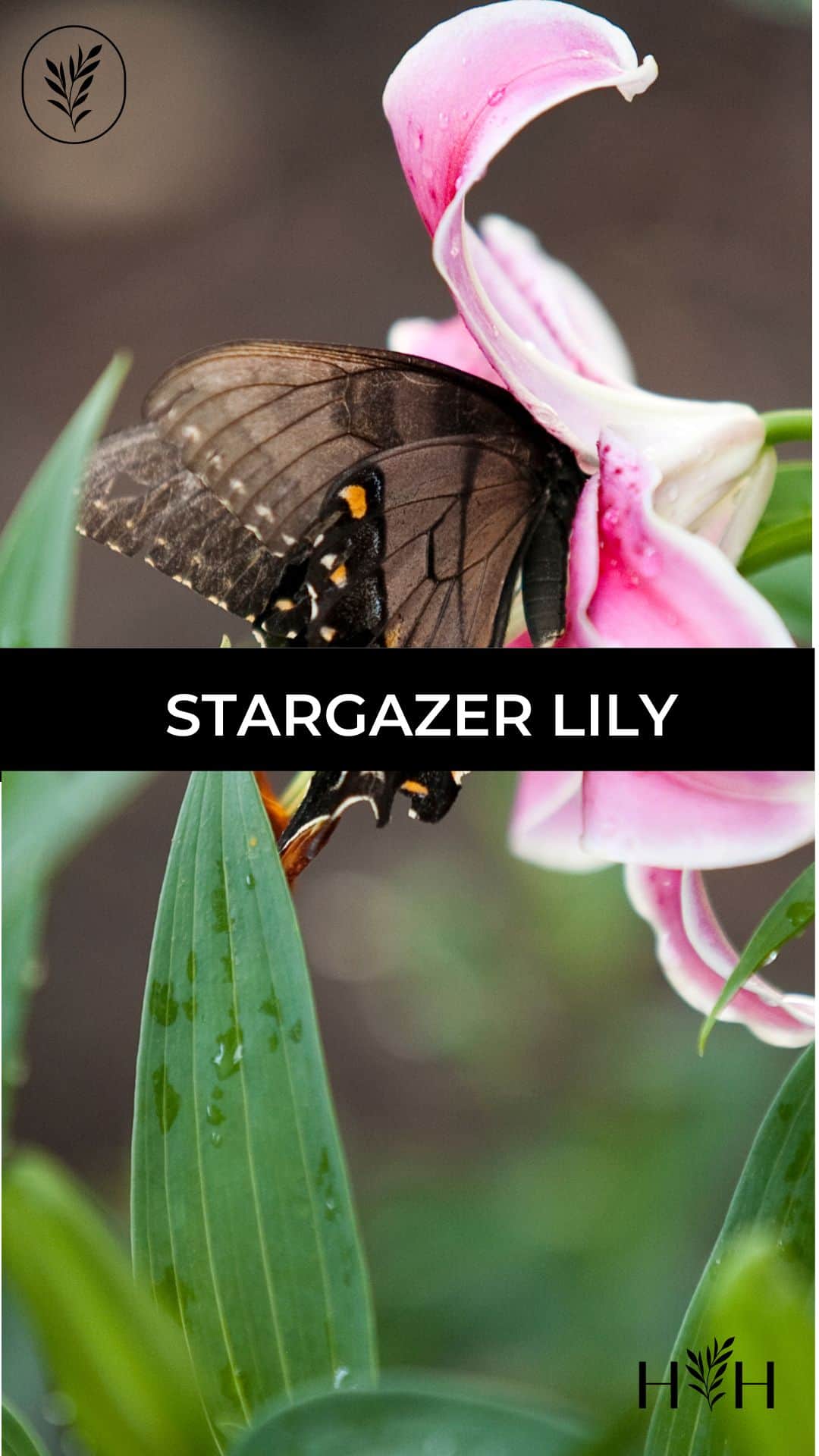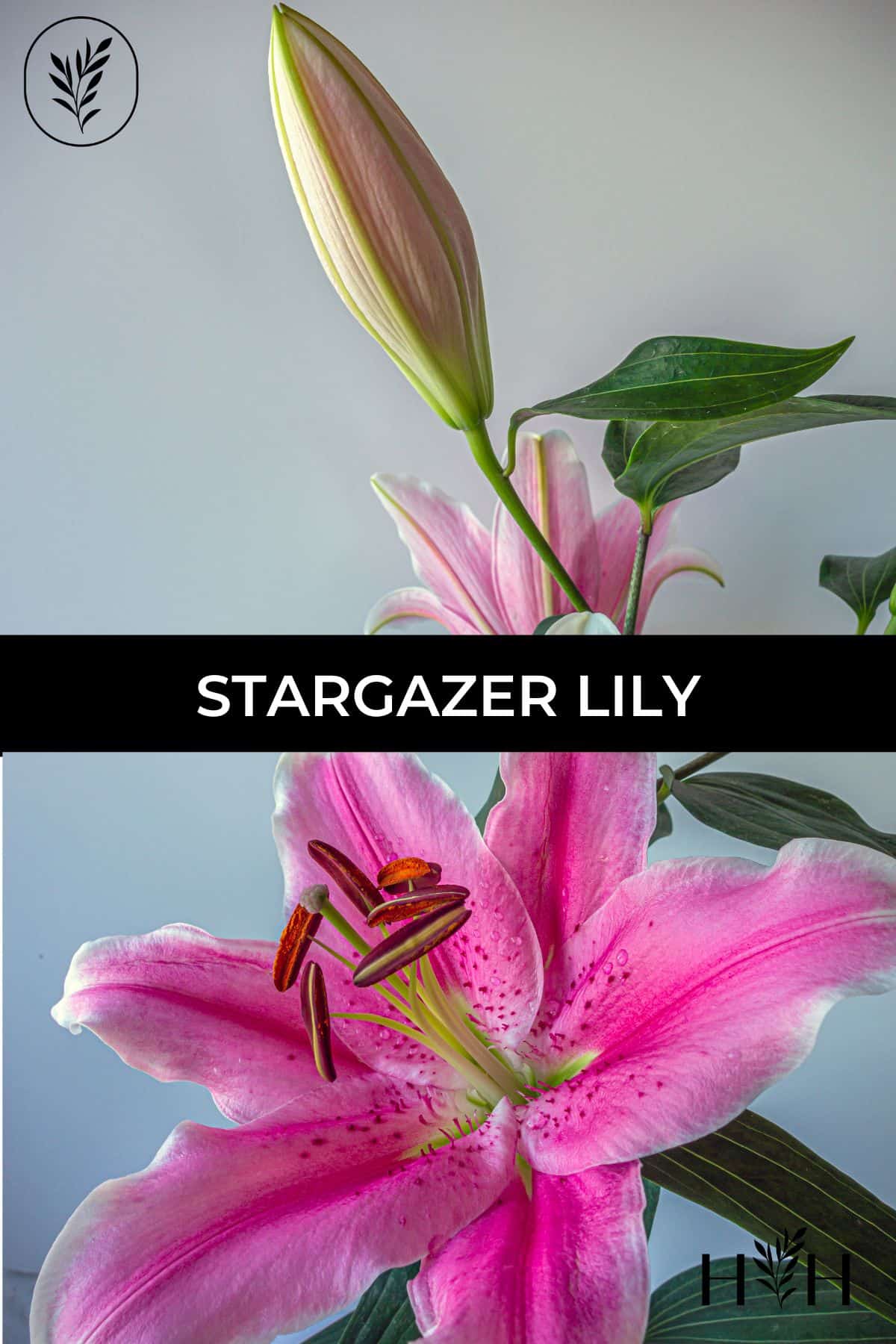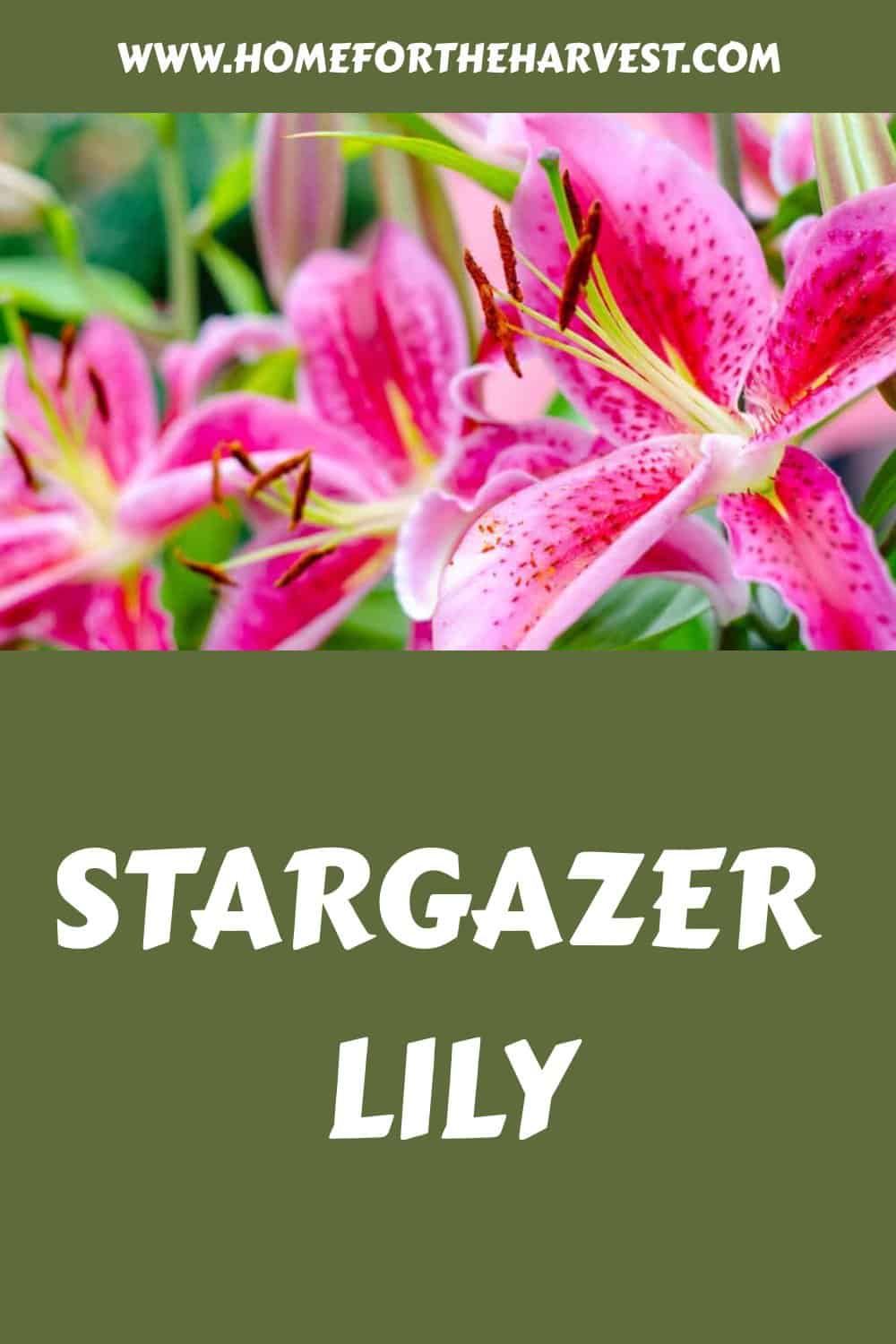The Stargazer lily is a garden favorite. It’s simple, beautiful, and doesn’t require a lot of effort.
The Stargazer lily is known for its fragrance and upward-facing flowers. This variety is an oriental hybrid lily that thrives in zones 4-9. It is a popular accent flower used in gardens and flower beds. It is classified in Lily Division 7 by the North American Lily Society.
Stargazer lily basics
The Stargazer lily was created in the ’70s by a breeder named Leslie Woodriff. This lily plant is one of the most popular varieties in the world. Leslie’s goal was to create an oriental lily that had an upward-facing flower. This hybrid was potentially bred from parent plants that included Lilium auratum and Lilium speciosum. The Stargazer was the first oriental lily variety to have this upward-facing flower.
Stargazer lilies are well-known for being easy to grow. The plants are usually 3-4 feet tall in bloom and reliably come back every spring in most temperate climates.
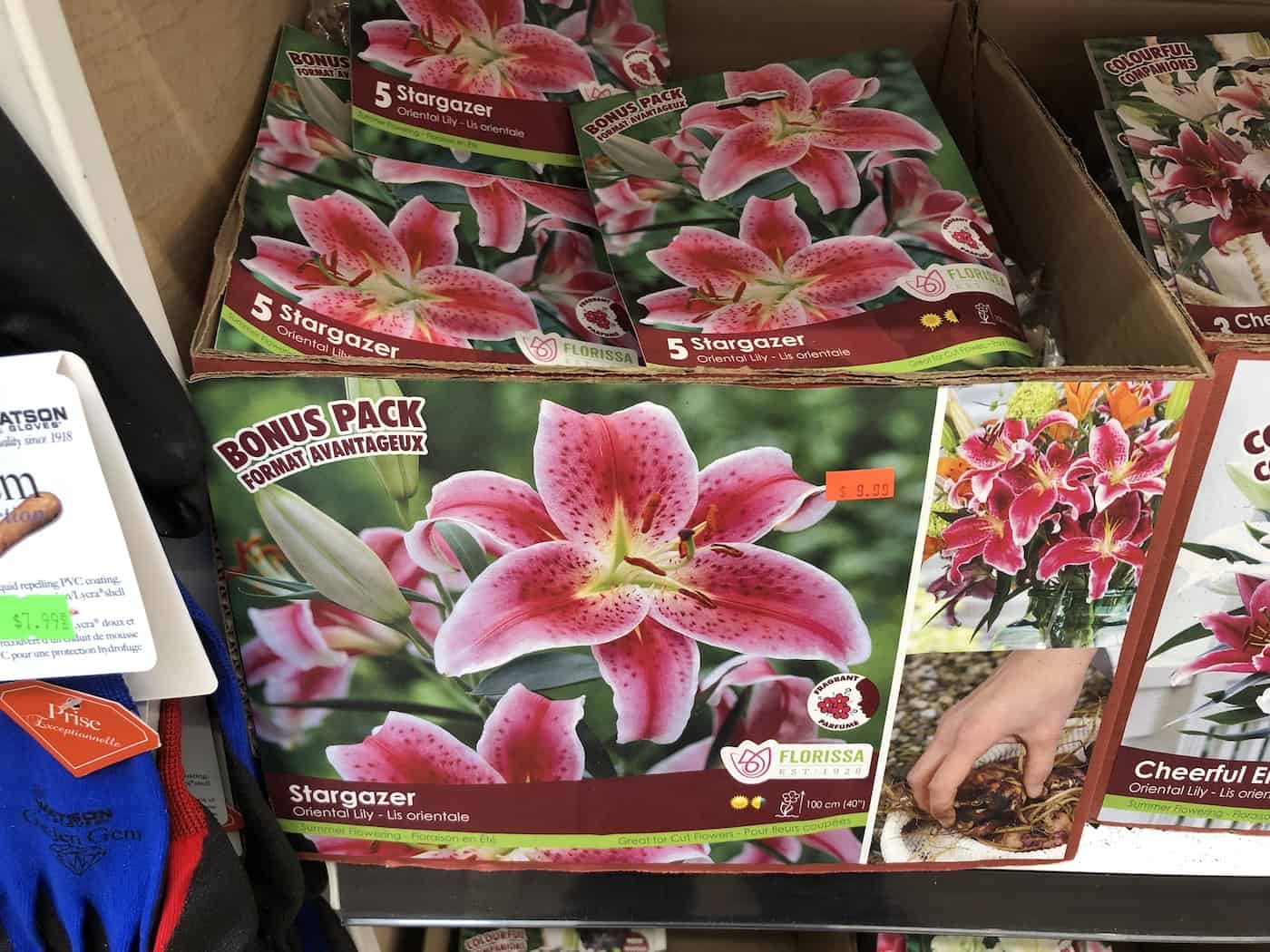
Lilies are perennial plants, meaning that healthy plants come back from their roots every spring. Lilies can last a very long time as long as they are given the proper care and treatment.
Every lily is classified by hardiness zone and divisions. These help gardeners know how to best grow their lilies by providing them with information on the preferred climate, sunlight, and other habitat specifics for different types of plants. Here is a guide all about types of lilies.
Growing climate and hardiness zones
Stargazer lilies can grow in Zones 4-9 with ease. What this means is that the stargazer will not normally die until temperatures reach about -30 degrees Fahrenheit (and even still, it survives). It also won’t do well in areas that don’t reach a minimum of a few degrees below freezing during their cold season.
So, if you want your Stargazer lilies to do well, you need to have winters that do freeze but don’t get too colder than about -30 degrees Fahrenheit for a long time. You’ve got a 60-degree window to work with there, and that covers a lot of areas.
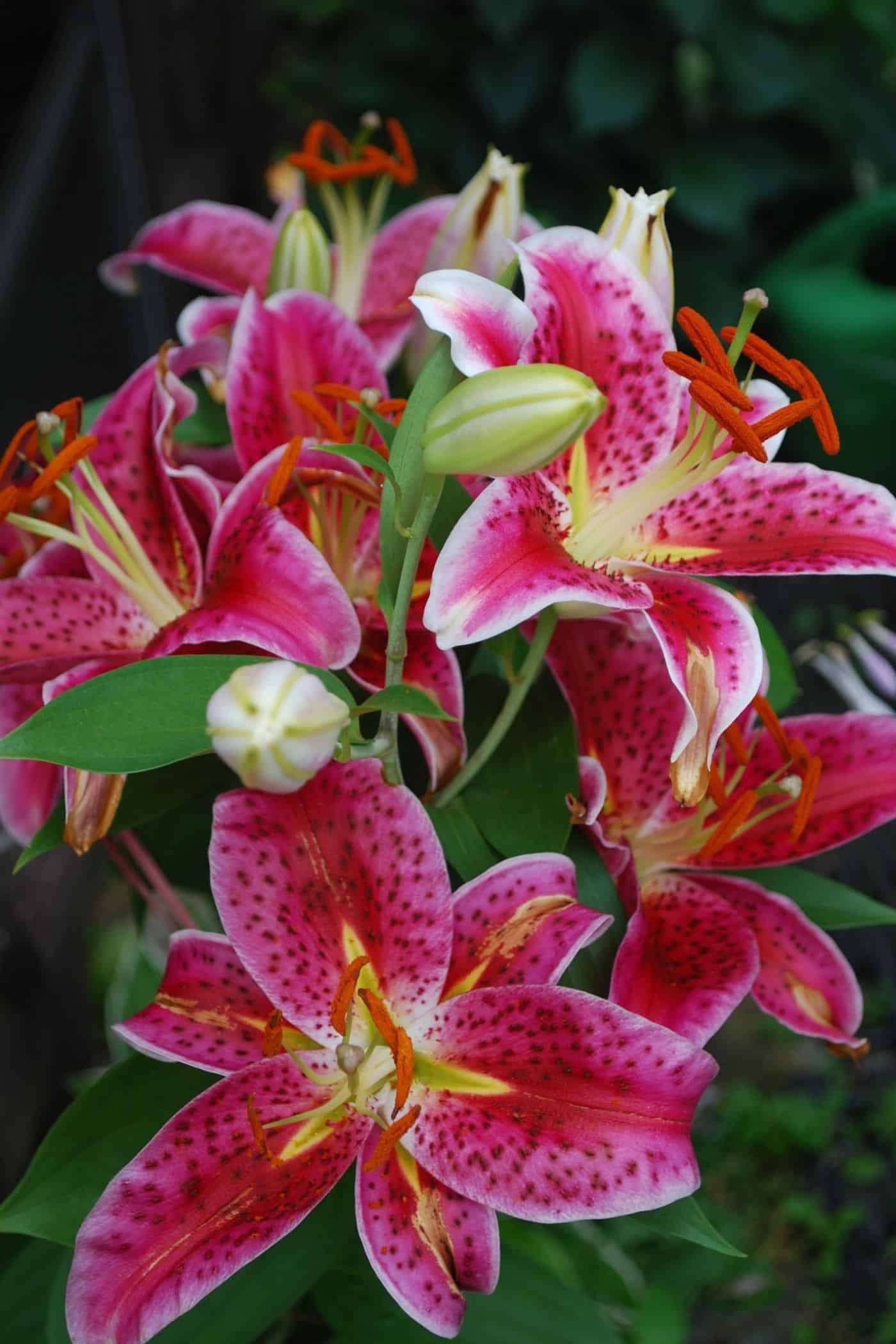
How to plant Stargazer lily plants
Planting your Stargazer lily the right way will go a long way to giving you a wonderful flower. Proper care will allow a long-lasting plant and beautiful flowers to grow. Let’s clarify something: though the Stargazer is very easy to grow, it can be a little difficult to get it to survive the winter. So you only need to give it special care if you don’t want to replant it every year.
Soil preferences
Stargazer lilies prefer slightly acidic soil. They will grow in natural soils, but if you plant them in any soil other than slightly acidic, it will help to add something to the soil to change its pH measurement.
The soil also needs to be well-drained. If the bulb sits in soil that is too wet, it will rot. The bulb will do best if the soil is kept constantly moist. Not super wet, but not dry. This allows the plant to grow properly.
Planting lily bulbs
The best place to plant your stargazer lily is in full sunlight. This means a place where it will get eight hours a day. It also needs to be at least six inches below the surface of the ground. A good rule of thumb is to bury the bulb in the ground at a depth roughly three times the height of the bulb.
Here is a detailed guide all about how to plant lily bulbs. Lily bulbs are usually planted in the fall, while potted starter plants are more commonly available in the spring.
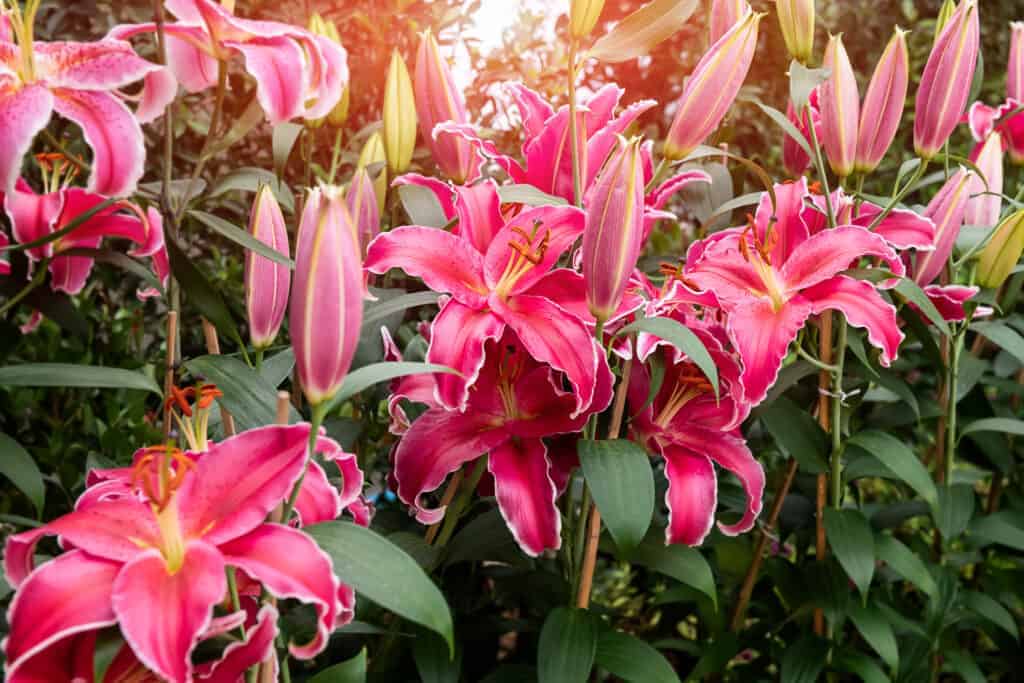
How to care for the Stargazer lily
Care for established lily plants is pretty straightforward. Keep them well-watered, especially in the weeks after planting. A few inches of composted organic mulch over the soil surface can also be quite helpful.
If you are planting a new bulb, it is best planted in early spring. If you live in a climate that may have any frosts after the start of spring, add mulch to the top of your soil. This will both help keep the ground warmer and slow your lily from growing too big too fast.
Garden pests
Pests are a big problem for all flowers. The heavy fragrance of the stargazer makes this plant a little departmental when it comes to pests. Some animals love it, some animals hate it. Four big pests tend to harm the stargazer. Small mammals, deer, botrytis, and aphids.
Small mammals
There are four common ways to deal with small mammals and protect your stargazer lilies.
The first is to remove their primary food sources, which are usually bugs and worms. This can be done most easily by spraying insecticides on your flowerbed. When the small mammals lose their primary food source, they will most likely relocate. However, this is no guarantee. The hungry little mammals may start to eat more of your stargazers in response.
The second is to use a repellant. Small mammal repellant will almost always work if you keep up the diligence in applying it. Mixing three parts castor oil to one part dish soap and applying it to the area around your flower bed and any entrance hole for tunnels will cause digestive upset and force them to move. This needs to be done regularly to work.
The third option is to plant more stargazers. Some small mammals might to not like the strong smells of most plants. This means that if they are harming your stargazer, they must not smell enough of them. Planting more may act as a scent barrier and will deter certain small mammals.
The fourth option is to call a pest control service.

Deer
Deer are a little more tricky to deal with than moles or rabbits. And deer love the taste of stargazer lilies. There are five ways of keeping them out of your flower bed.
The first, and probably easiest, is to plant flowers that deer don’t like to eat along with your stargazer lilies. Sunflowers, lavender, and forget-me-nots are all flowers that deer hate. So planting them around your stargazers will normally provide plenty of protection.
The other easy method of prevention is to spook the deer. This can be done by installing motion-activated lights around your stargazers. You could always install a fence around your flowers, but this fence needs to be at least eight feet tall.
Repellants also work but require more effort and regular maintenance (at least once a month). Hanging a bar of soap for a tree branch before it rains typically does the trick. You could also do some sprays around the flowerbed. A mixture of egg and water (about 20 percent egg) normally does the trick. Sprays need to be applied six feet in the air for proper coverage.
Putting some sort of net or tube around your Stargazers will also prevent the deer from munching on them.
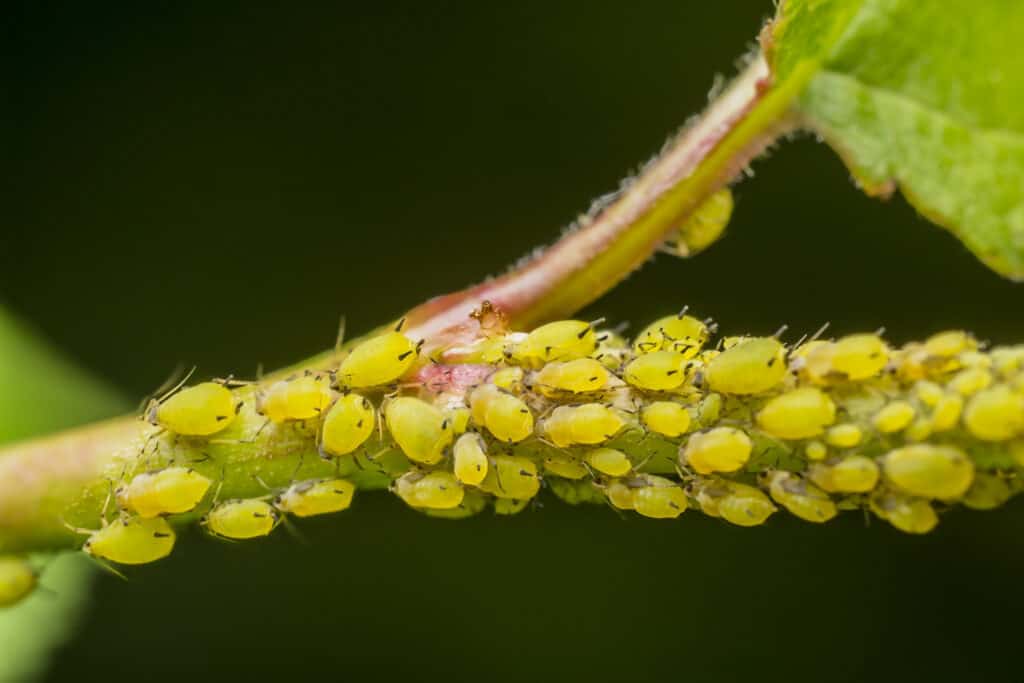
Aphids
Aphids are little insects that love to crawl on plants. If you see any then that means your stargazer needs immediate help.
Take a spray bottle full of water and a bucket of foamy soap and water. Place the bucket beneath the leaves you are spraying the catch any aphids that fall. Spray the lily with water. The goal is to knock off as many aphids as you can. If you mix some rubbing alcohol in with your spray bottle that will help deter future aphids if applied regularly. If it’s done too much, it could hurt your stargazers though.
Introducing ladybugs will also get rid of the aphids and ladybugs will not harm your plants.
Dividing Bulbs
One of the joys of plants that bulb is that they are really easy to propagate. Once the bulb is big enough, all you do is cut it and replant it.
Divide the bulb in early spring before the plant starts to grow. This will give the stargazer bulbs plenty of time to grow and establish themselves before the fall when they go dormant. You can divide once every three years or so.
How to divide the Stargazer lily bulbs
Water the stargazer the day before you divide it. Dig up the entire bulb. Gently shake off any oil and dirt. Then divide it one of three ways. You can either; gently pull the pieces apart with your hands, cut the stargazer with a sharp knife, or place two forks back to back and pry the bulb apart. After the bulb is separated, replace both in the ground and cover them with loose soil.


